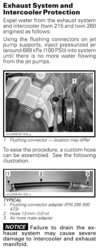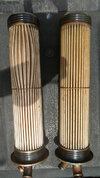Joe Starbuck
Member
Another winterizing question. I have a 2012 Challenger 230, twin 215s. My Operator's Manual says winterize the exhaust by blowing out the water with air. Lots of people dump marine antifreeze in the system instead. Given that P-glycol antifreeze is in short supply this year, and blowing with air is less work, I am intrigued. Have any of you done the air blow method as specified in the Manual? I am on Cape Cod, so you have an idea of the weather, whether the weather matters.






